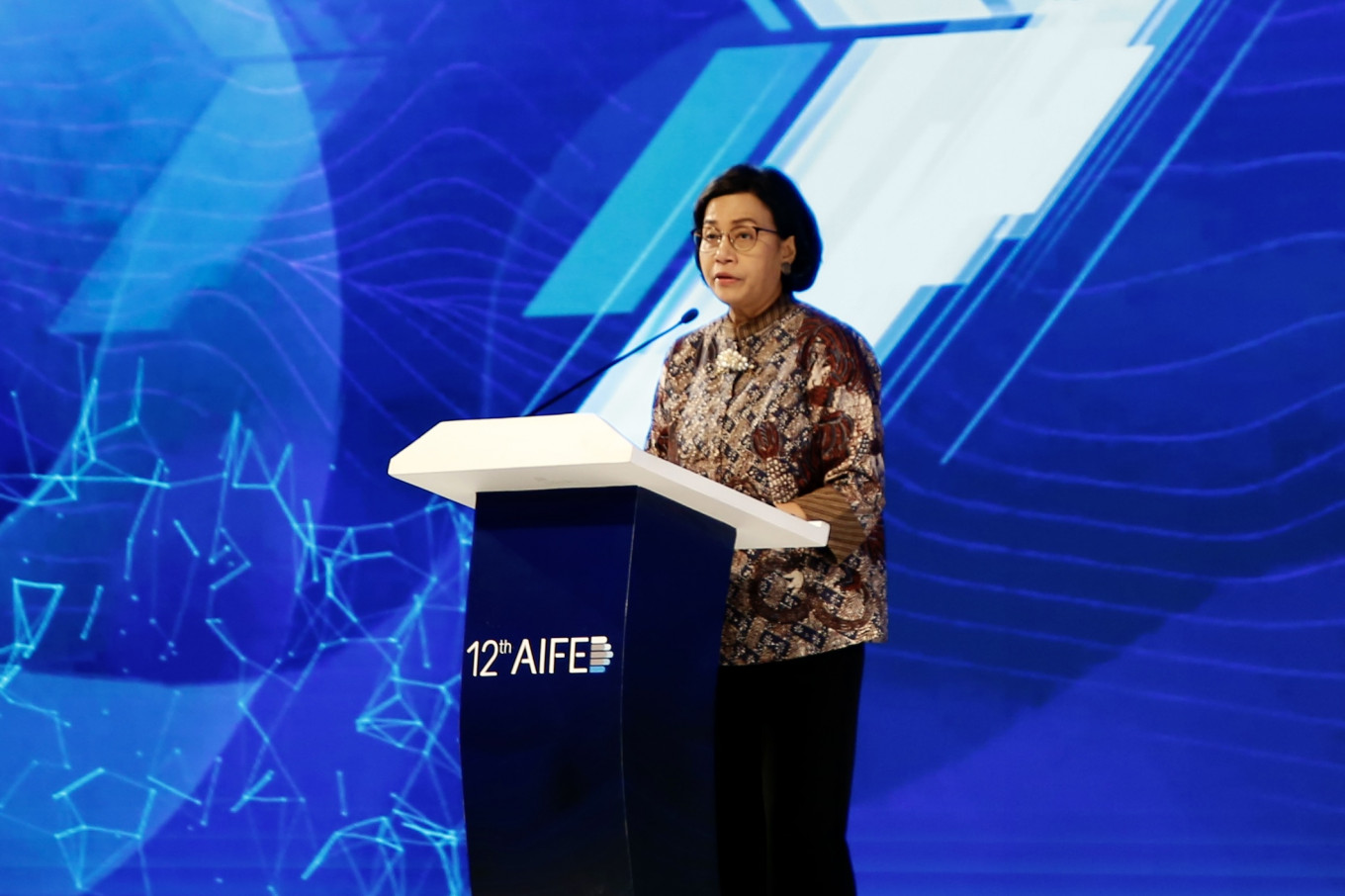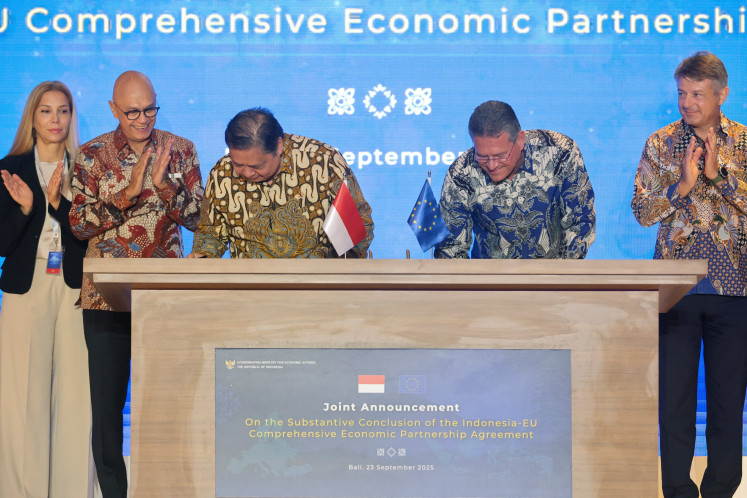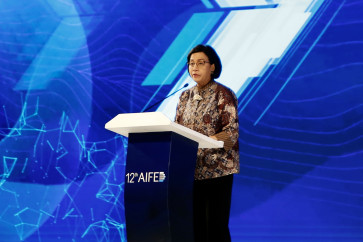Popular Reads
Top Results
Can't find what you're looking for?
View all search resultsPopular Reads
Top Results
Can't find what you're looking for?
View all search resultsMiracle needed for RI to become advanced economy by 2045: World Bank
“For middle-income countries to have high income in decades rather than centuries, it would need a miracle,” says World Bank Group chief economist Indermit Gill.
Change text size
Gift Premium Articles
to Anyone
T
he World Bank has thrown cold water on Indonesia's dream of becoming a high-income economy by 2045 and outlined some of the challenges middle-income countries face in making such a leap.
According to government planning, achieving that target in time for Indonesia’s centenary of Independence would require annual gross domestic product growth of 6 to 7 percent over the next 20 years.
“For middle-income countries to have high income in decades rather than centuries, it would need a miracle,” World Bank Group chief economist Indermit Gill said on Monday at a seminar held at the Finance Ministry's Dhanapala Building in Jakarta titled ASEAN Economic Development and the Middle-Income Trap.
While acknowledging the country’s strong economic growth, Gill pointed out that the road ahead would be tougher for Southeast Asia’s biggest economy.
Read also: Indonesian economy to steadily grow over next two years: World Bank
Since the 1970s, per-capita income in many middle-income countries has stagnated at a fraction of the United States level, according to the World Bank’s World Development Report 2024 titled Middle Income Trap that was published last month.
The report found “that as countries grow wealthier, they usually hit a ‘trap’ at about 10 percent of annual US GDP per person – the equivalent of US$8,000 today.”



















